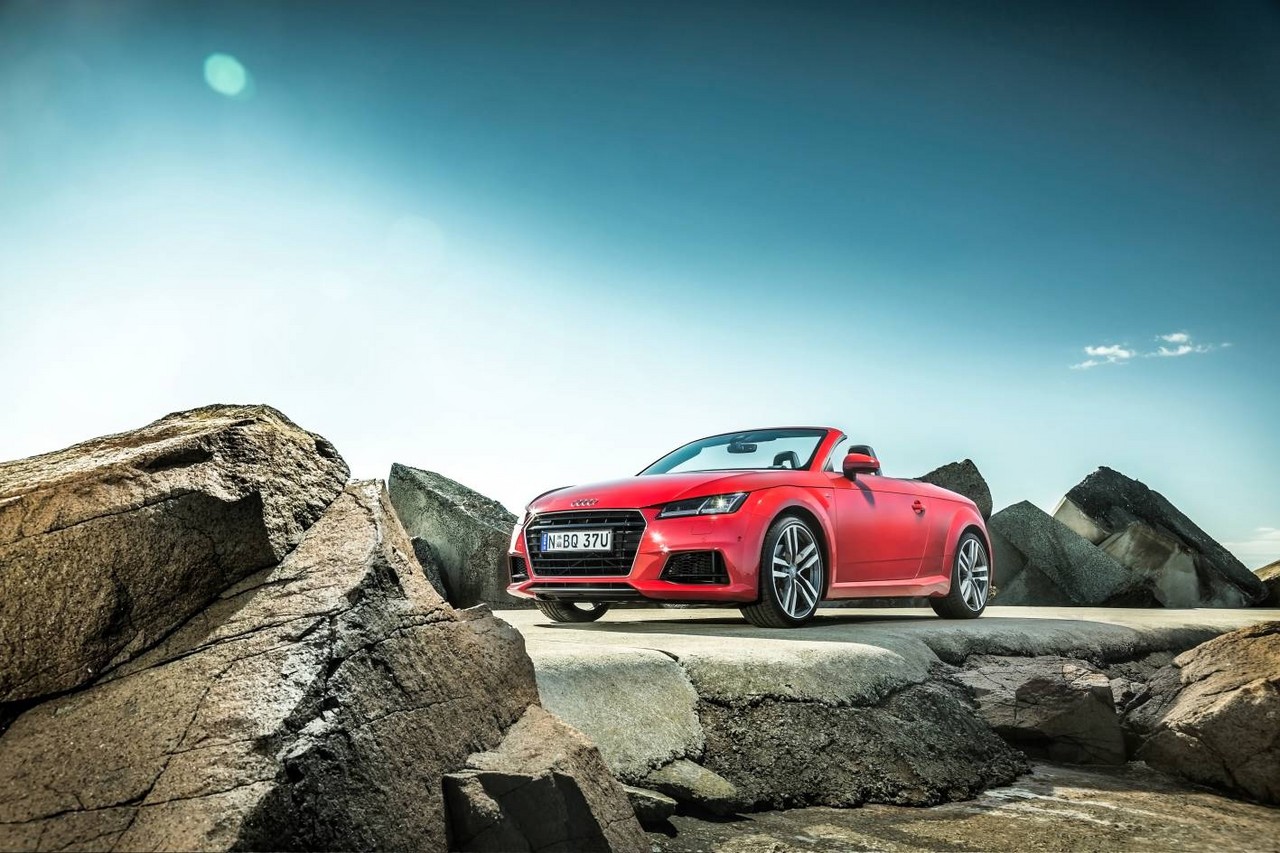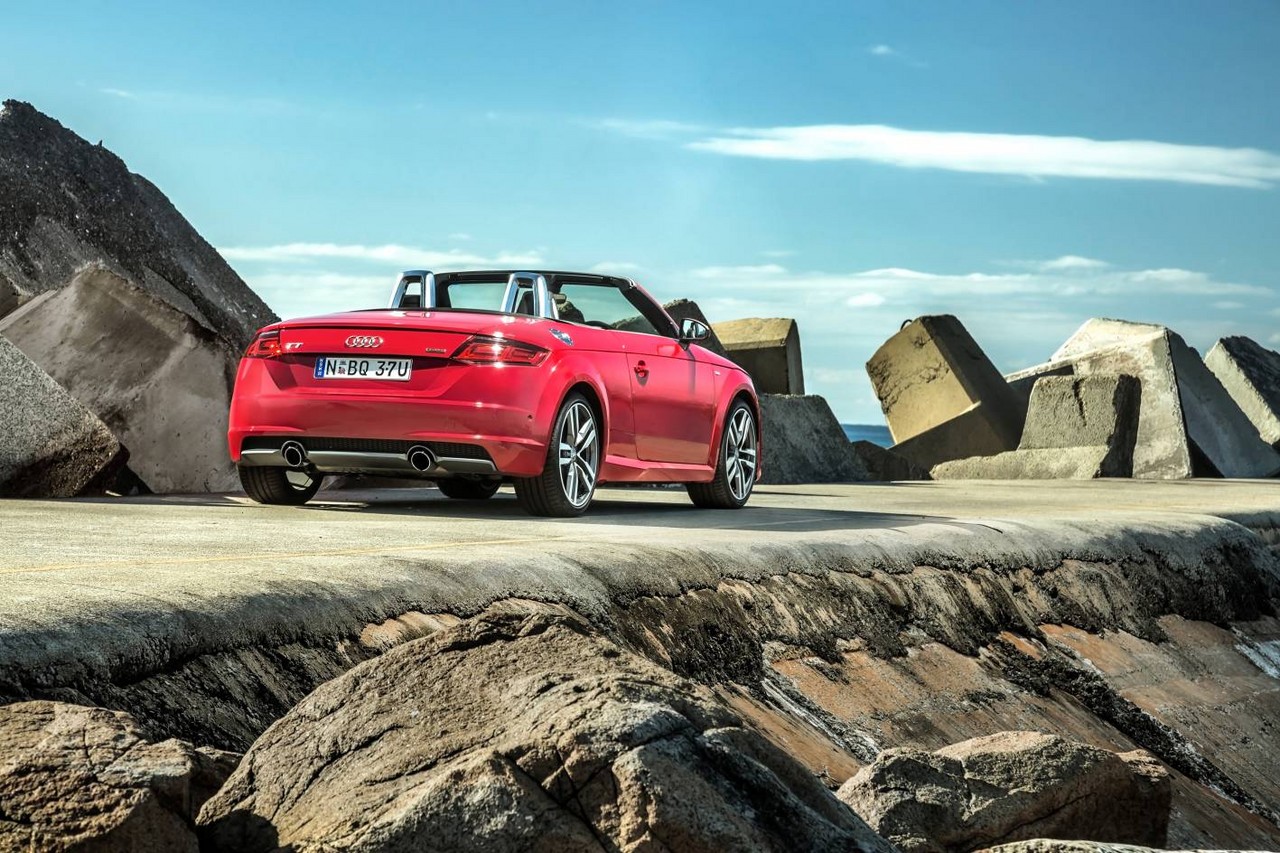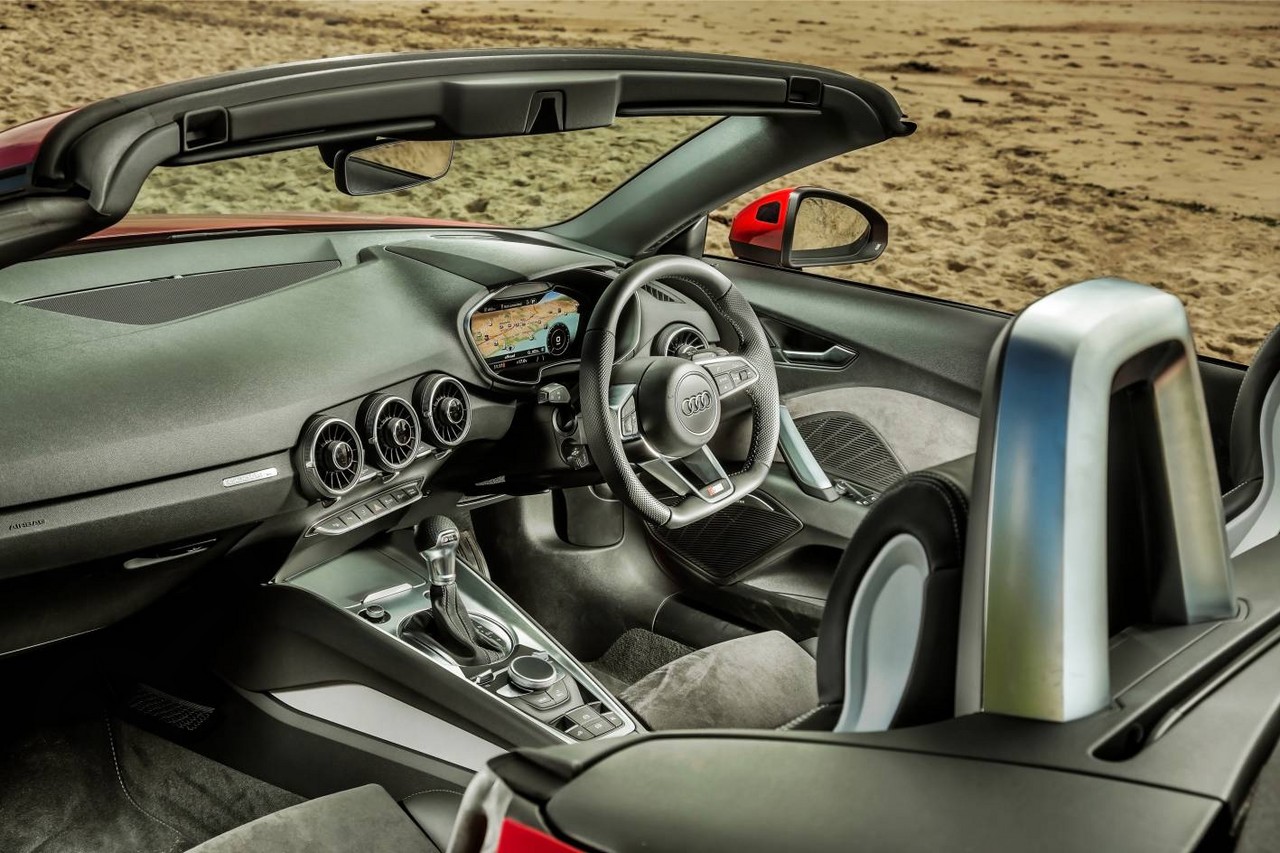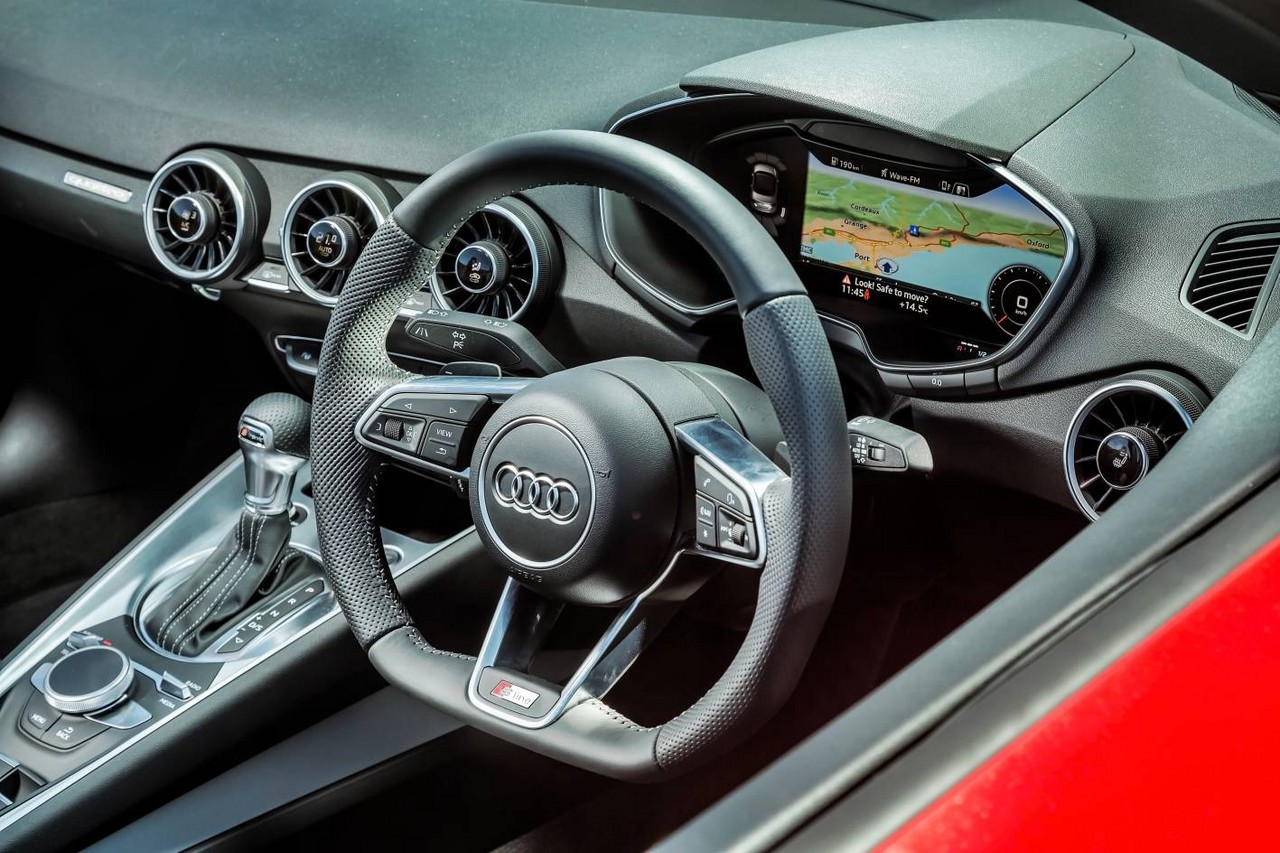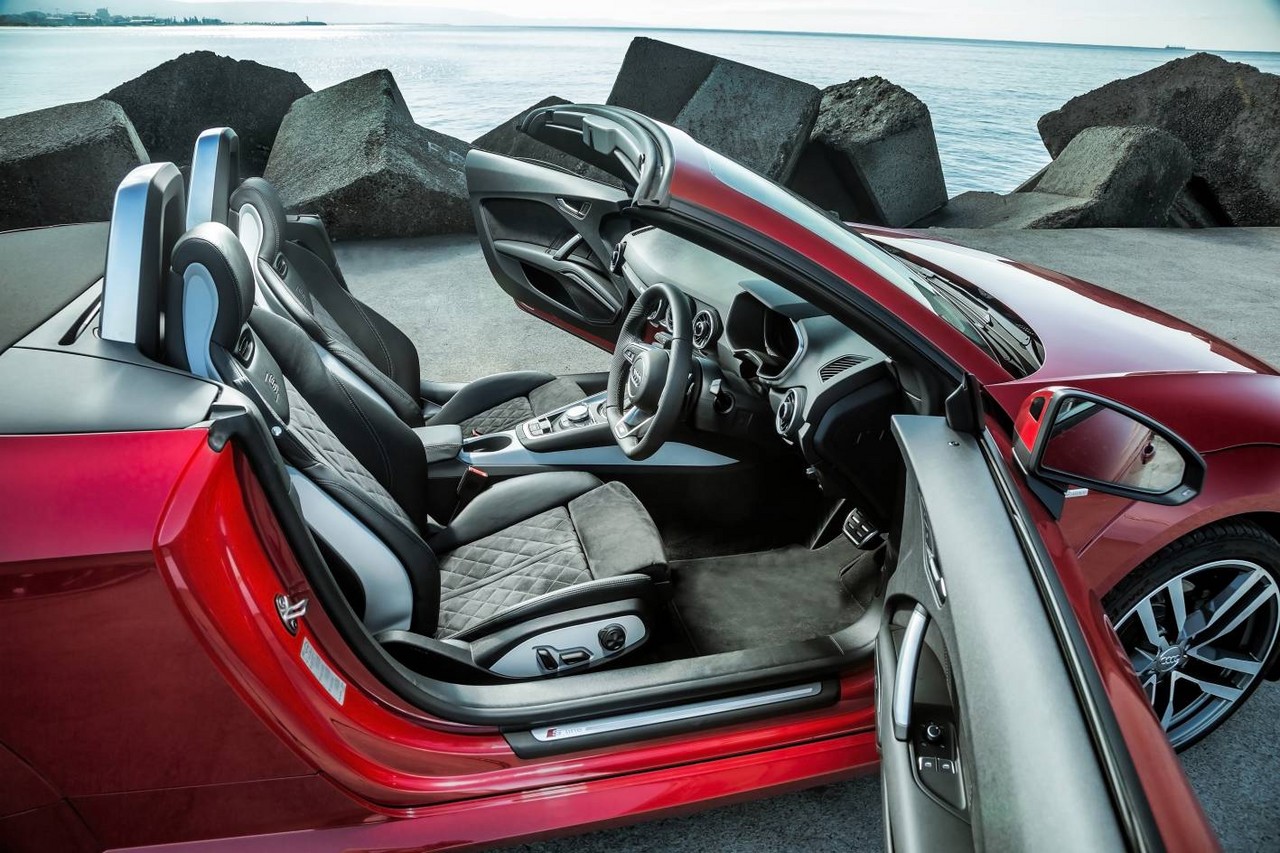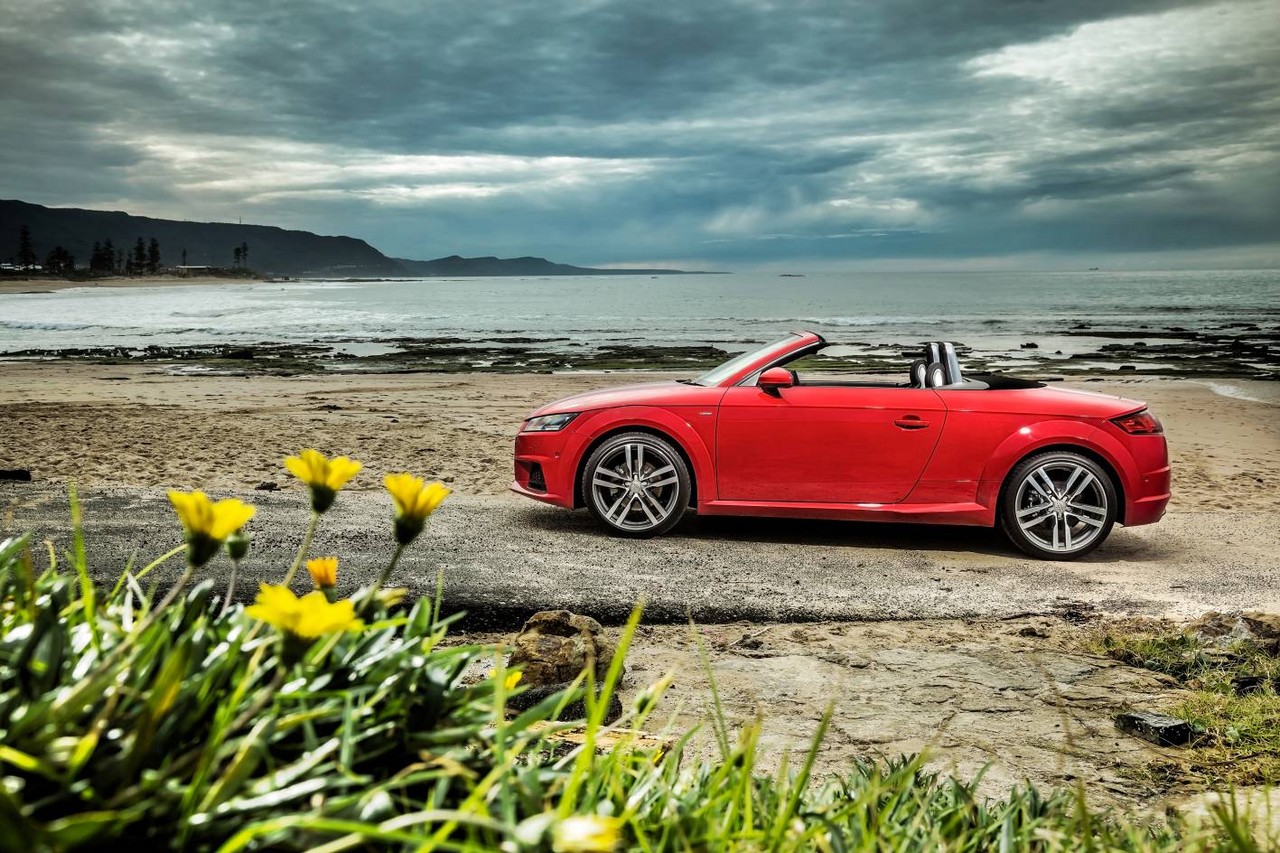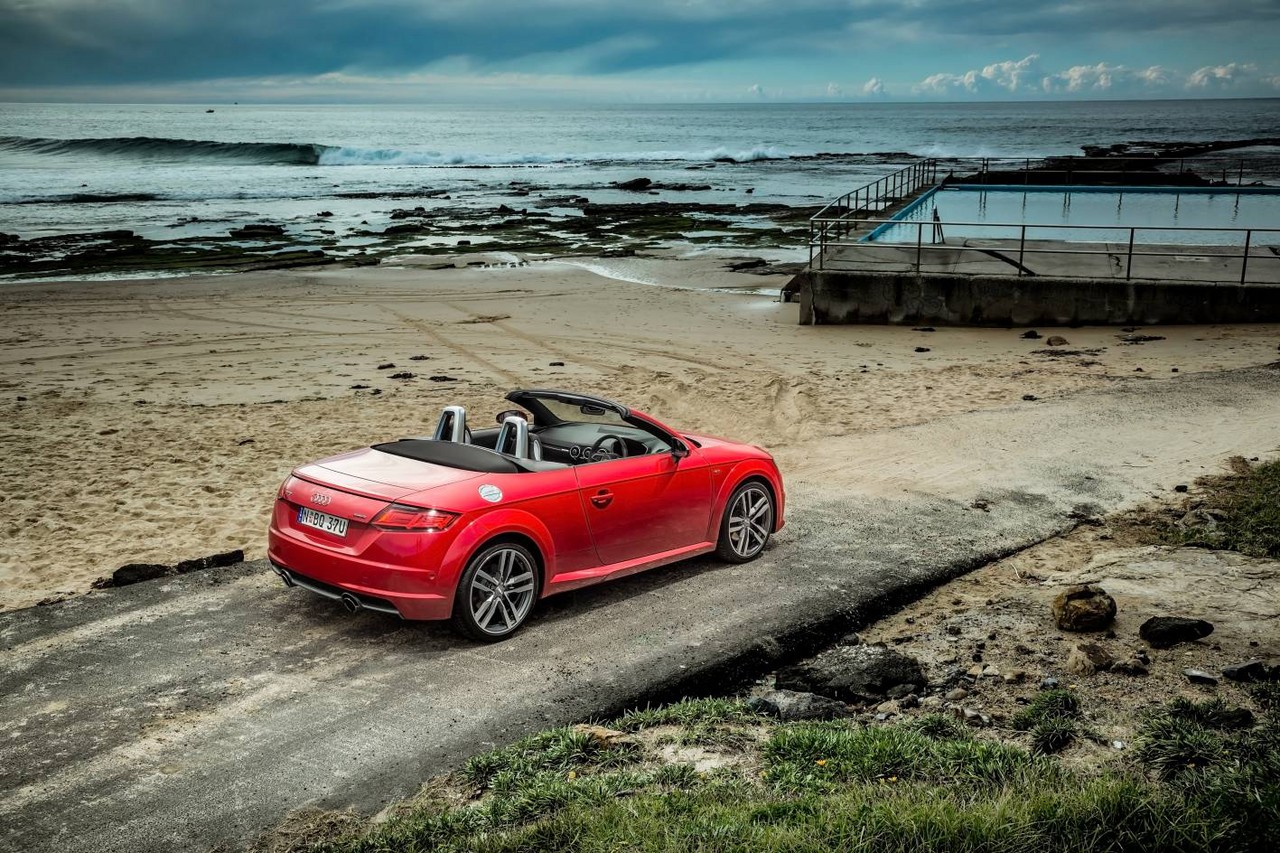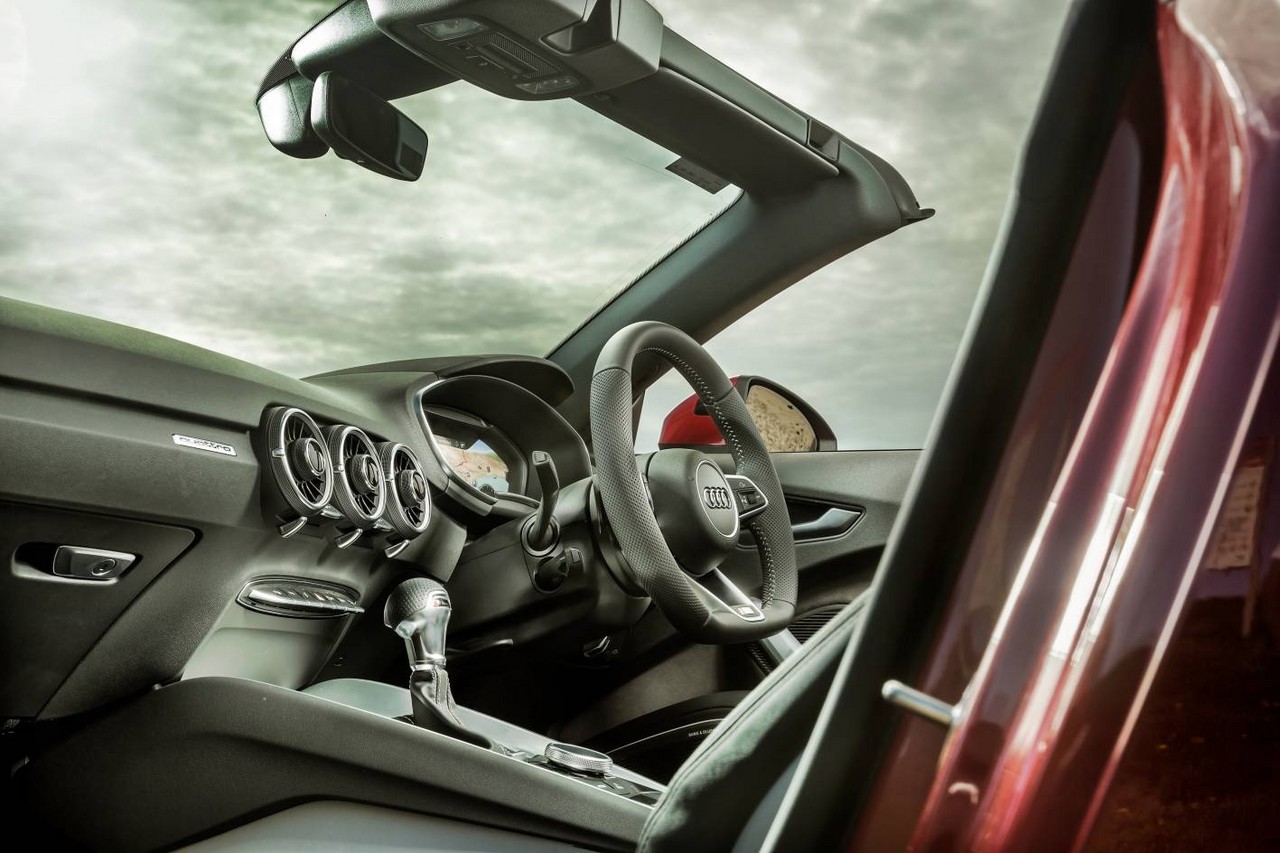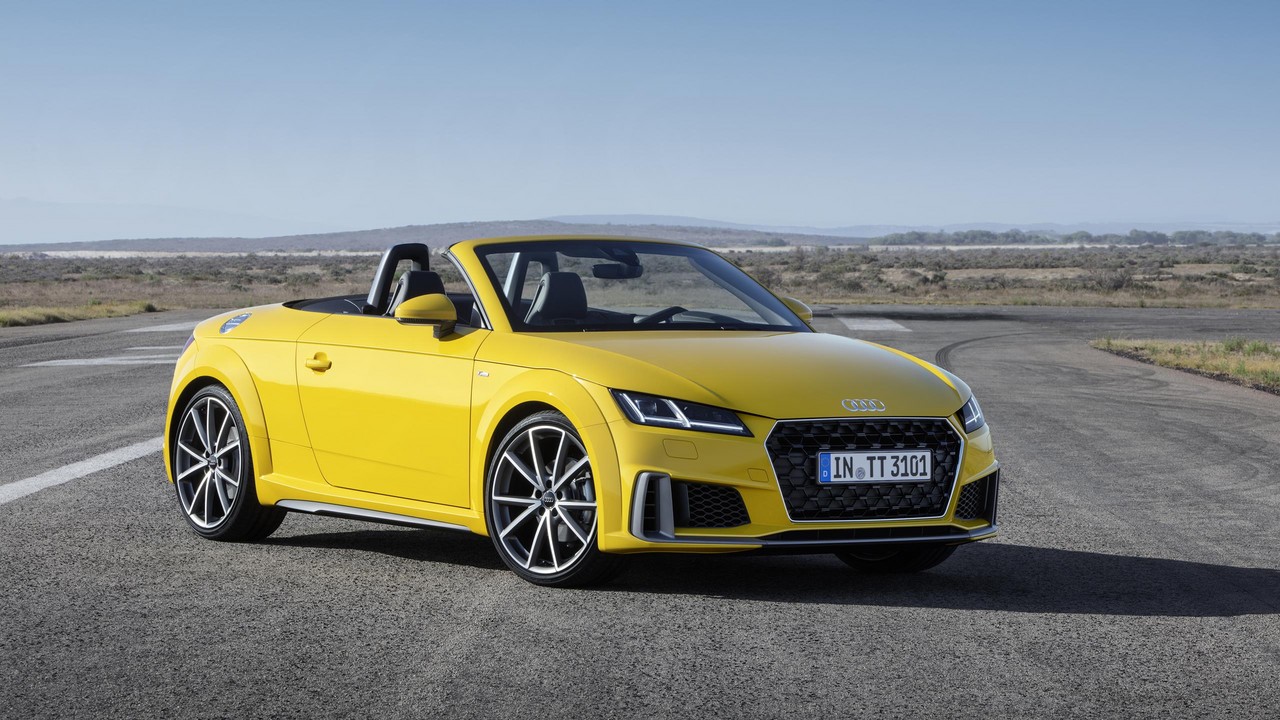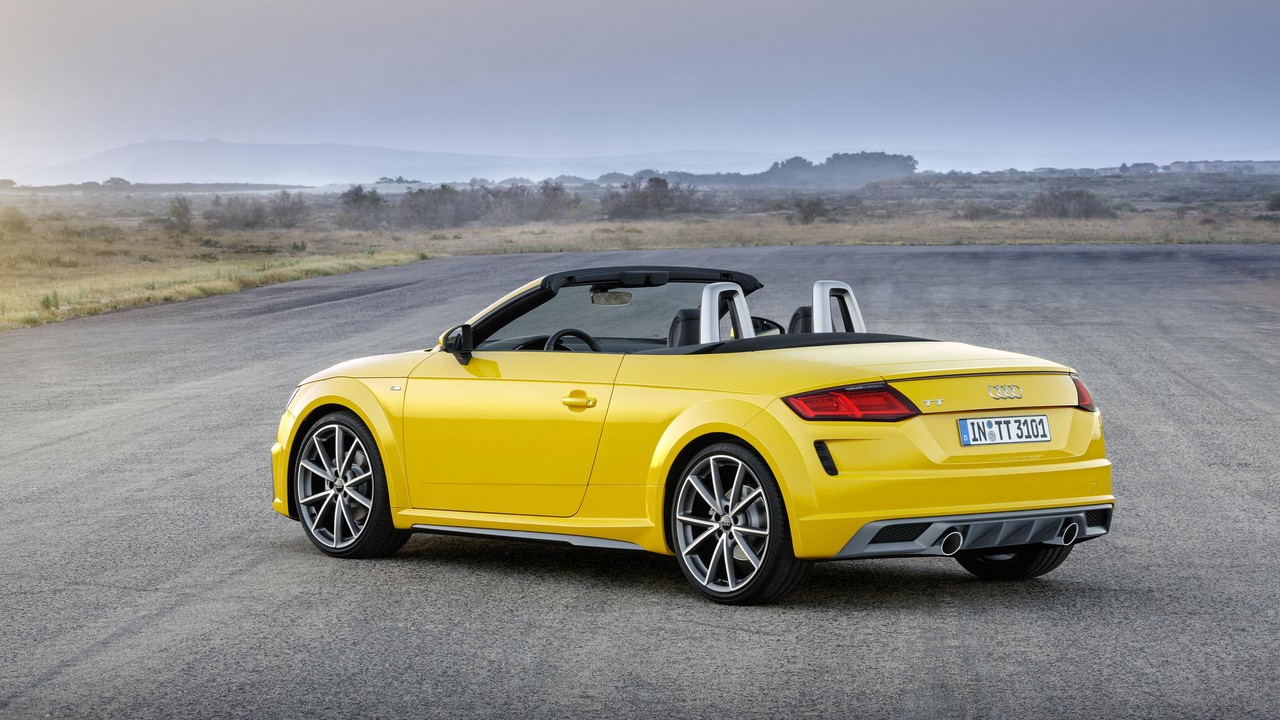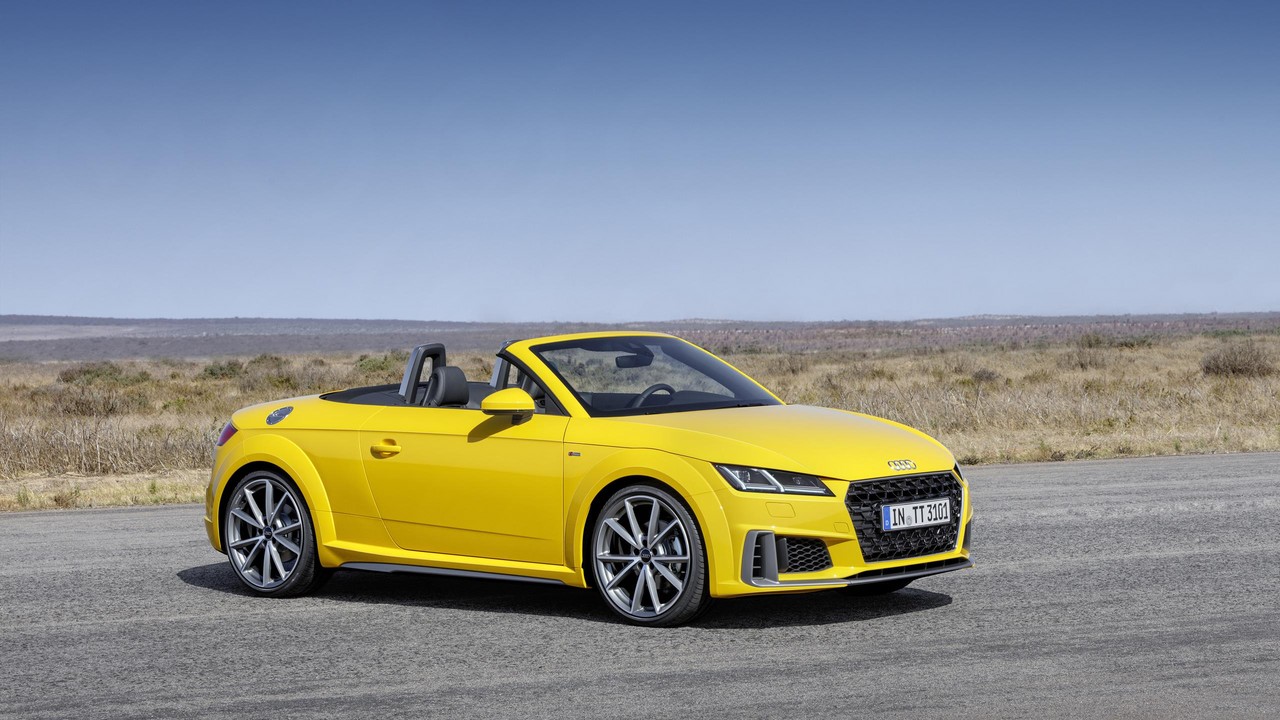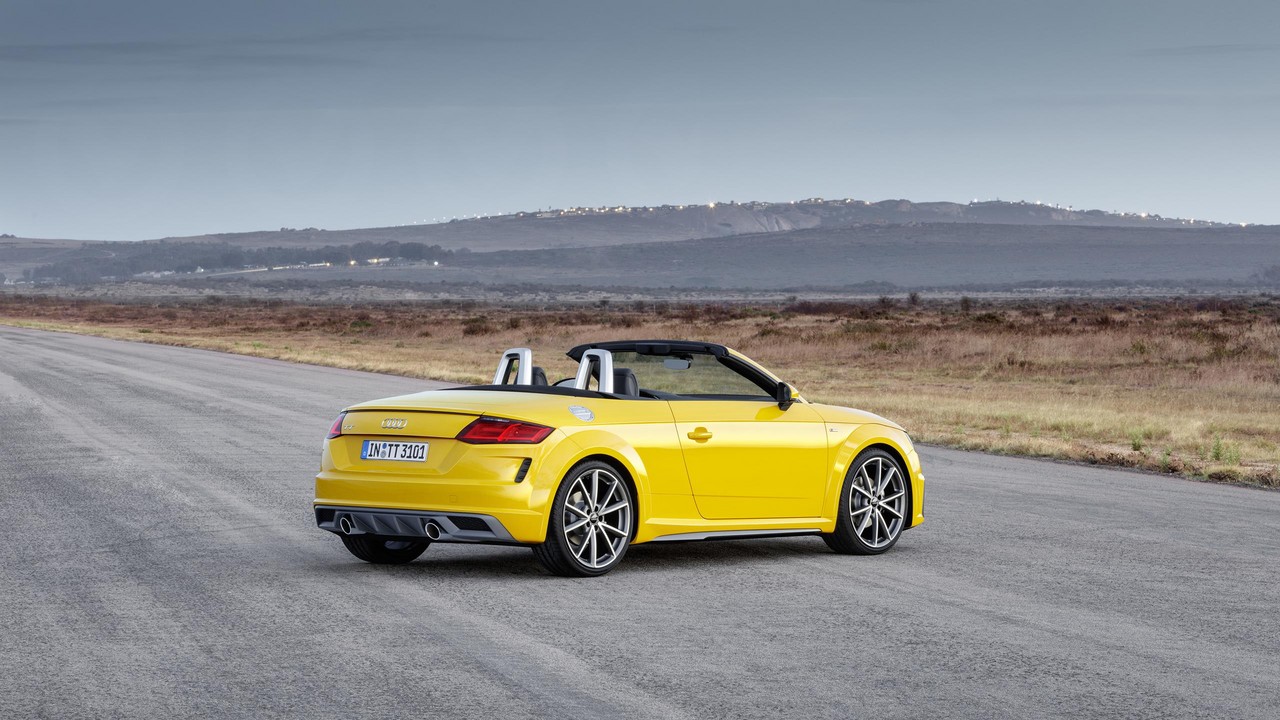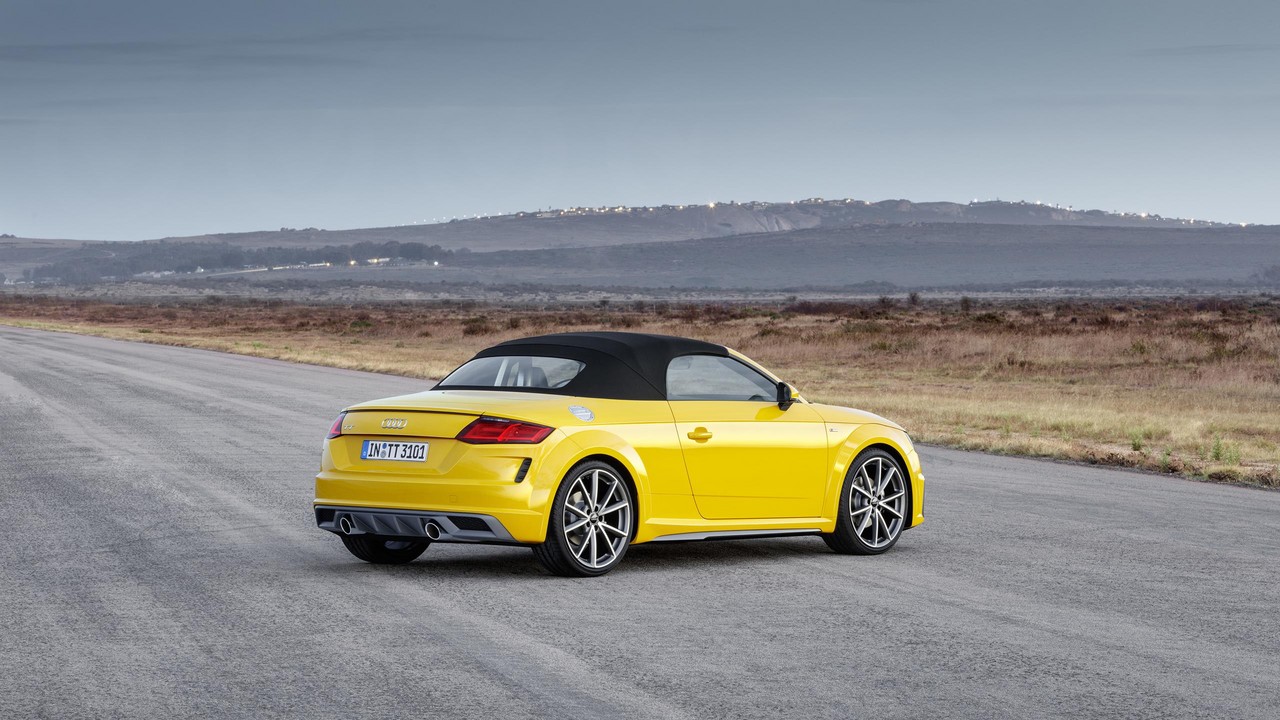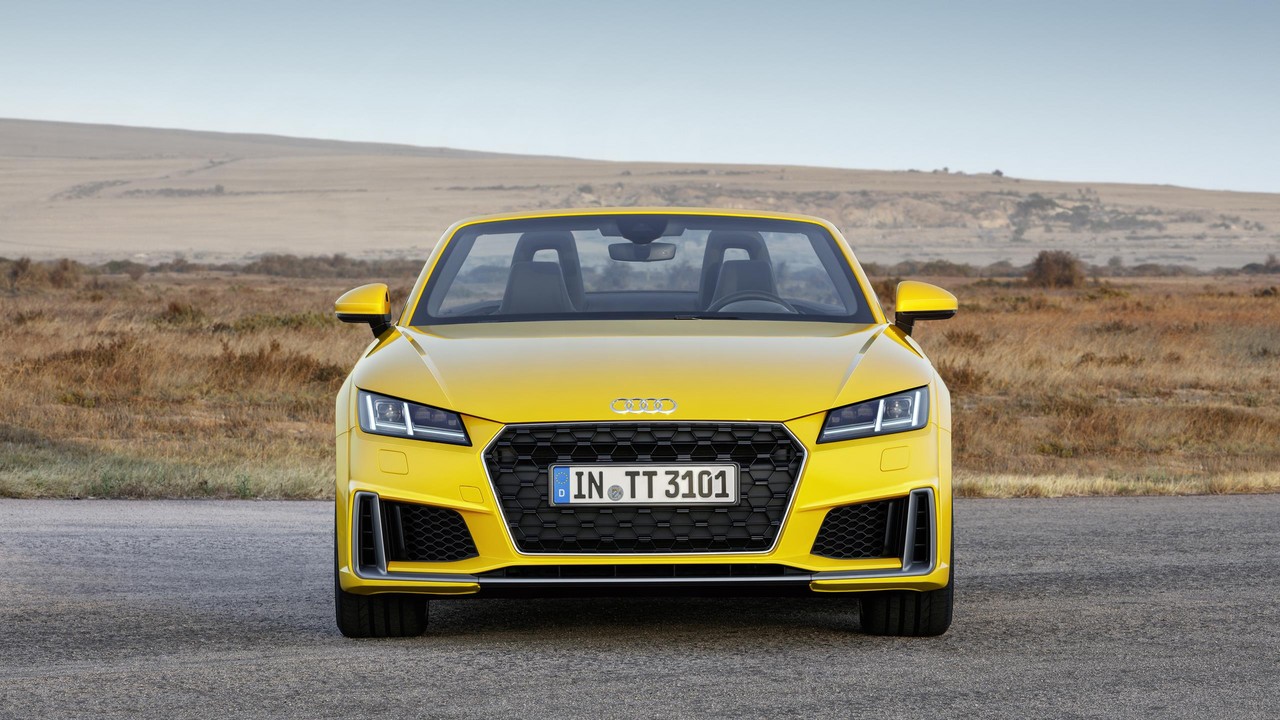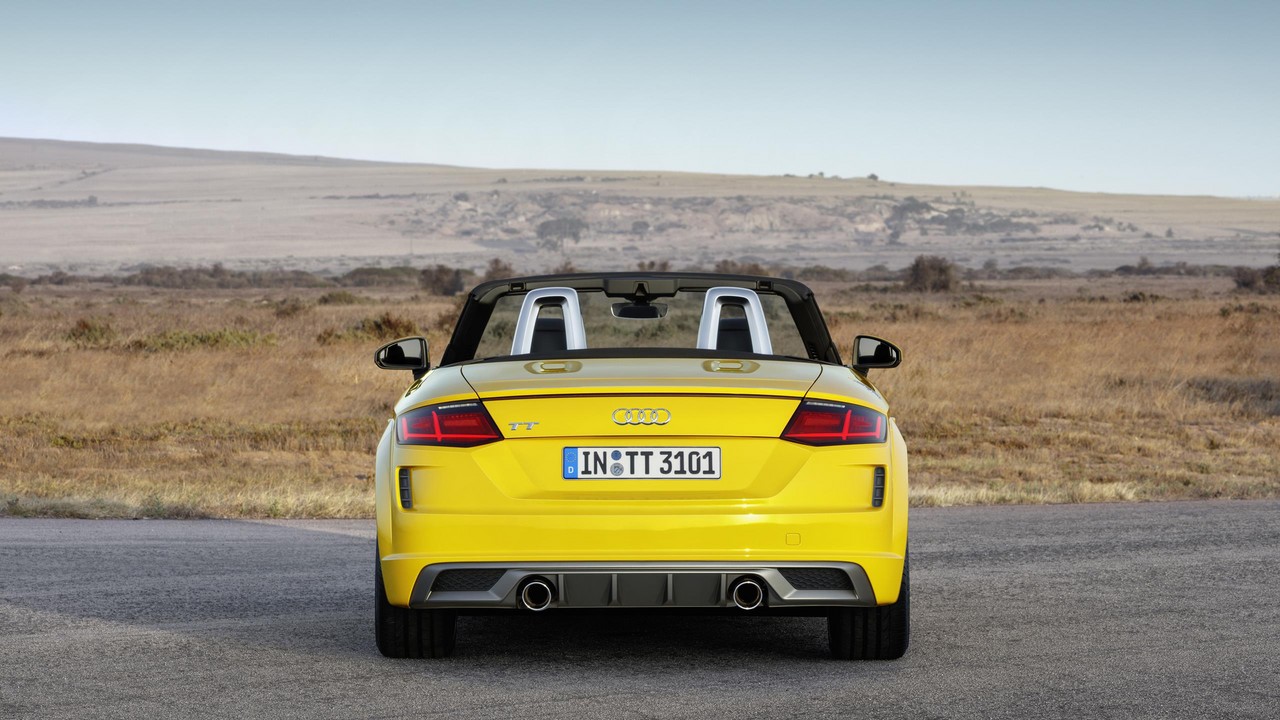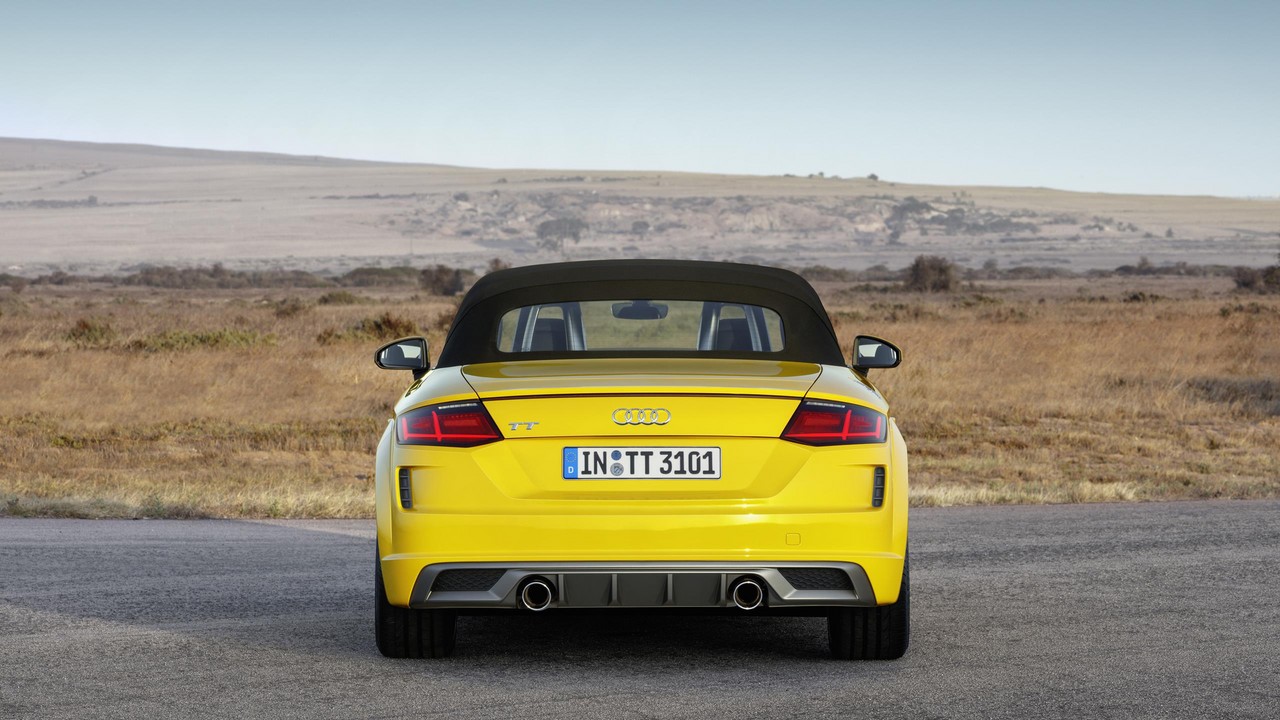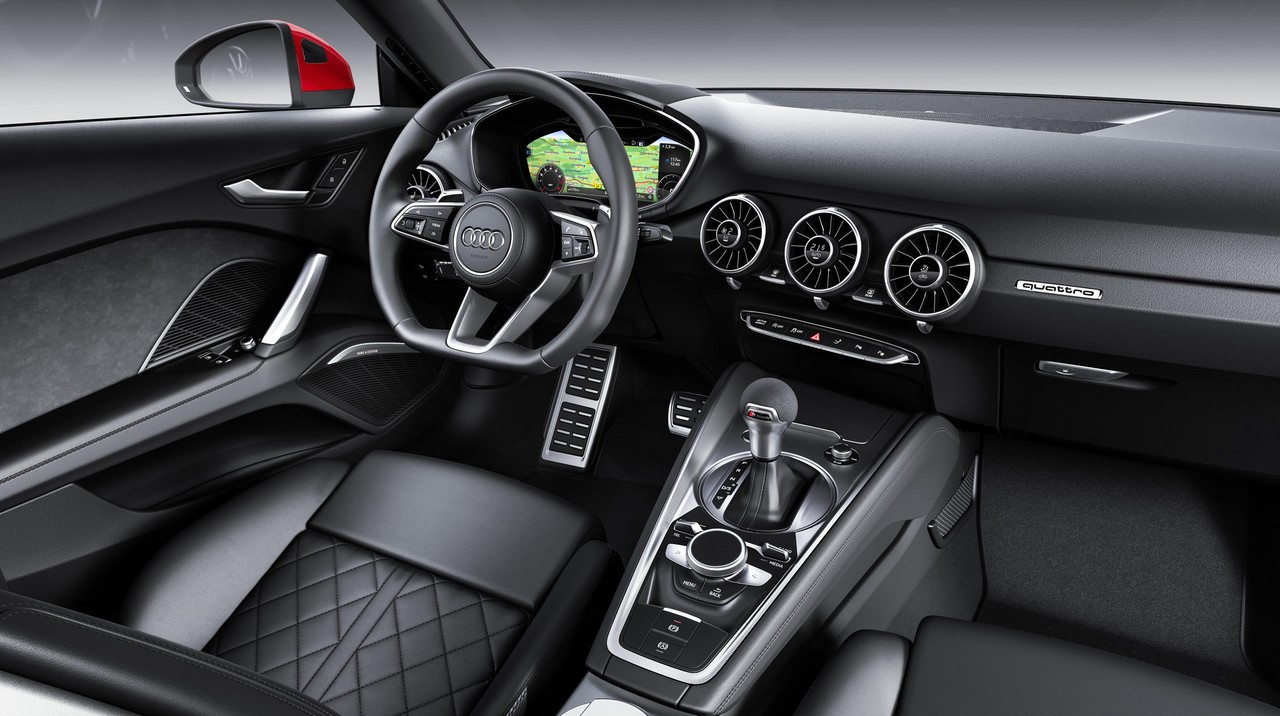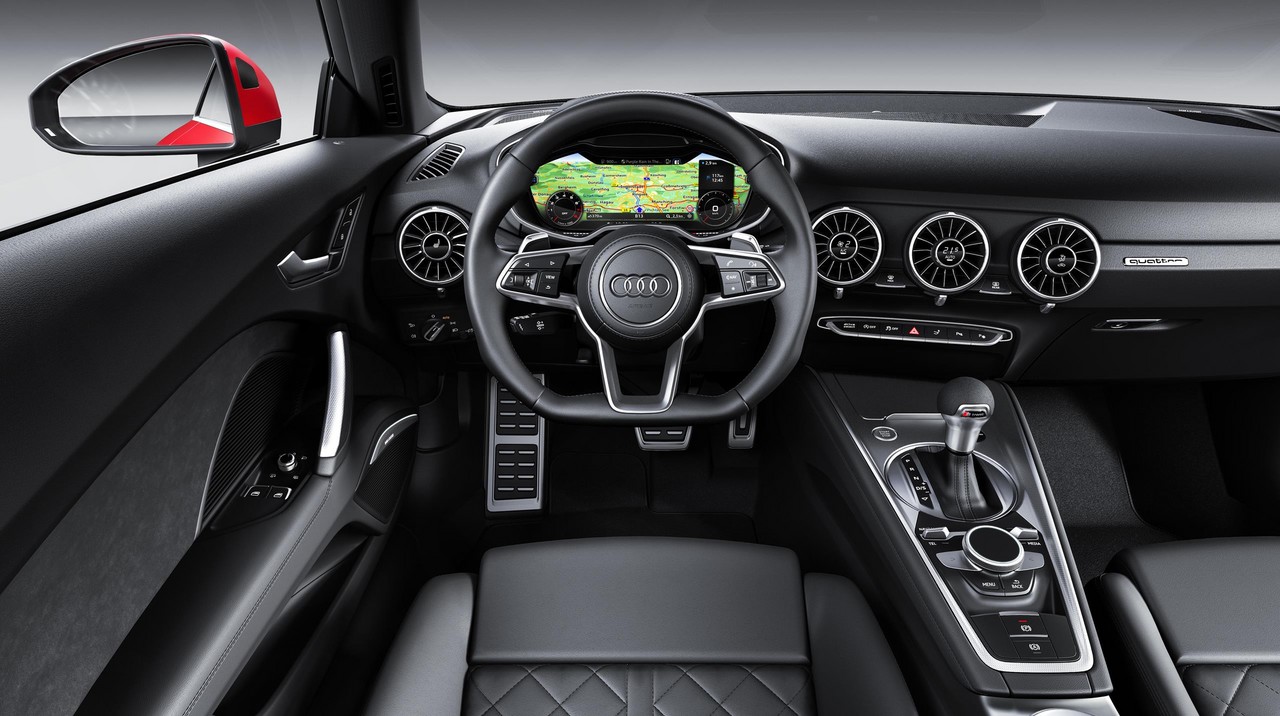
- Responsive 2.0-litre turbo petrol engine
- Enjoyable dynamics
- High standard of interior fit and finish
- Open-top appeal
- Susceptible to torque steer
- Steering lacks feel
- Noise on coarse-chip roads
- Cramped rear seat
Review: Audi 8S.I TT Roadster (2015-18)
Overview
Released in Australia in July 2015, the Audi 8S TT Roadster was powered by a 2.0-litre turbocharged engine. Manufactured in Gyor, Hungary, the TT Roadster was available in front- and all-wheel drive models; a six-speed double clutch transmission (DCT or Audi’s ‘S-Tronic’) was fitted as standard.
2.0 TFSI EA888 engine
The 1984 cc EA888 four-cylinder petrol engine had a grey cast iron block with an 82.5 mm bore and a 92.8 mm stroke, a die-forged steel crankshaft with five main bearings, a cast aluminium alloy cylinder head, direct injection and port injection (the latter for part load operation), a turbocharger which provided peak boost pressure of 0.8 bar, an intercooler, double overhead camshafts (toothed chain-driven), variable intake and exhaust camshaft timing, variable exhaust valve lift, roller finger cam followers with hydraulic valve clearance compensation, four valves per cylinder, a variable intake manifold and a compression ratio of 9.6:1.
To minimise fuel consumption, the 2.0 TFSI engine had a ‘Start/Stop’ function which enabled the engine to shut down when the vehicle was stationary in traffic. Furthermore, the Audi TT required 95 RON premium unleaded petrol (PULP) and complied with Euro 6 emissions standards.
| Variant | Edition | Engine | Trans. | Peak power | Peak torque |
|---|---|---|---|---|---|
| 2.0 TFSI | Sport, S line |
2.0-litre CHHC turbo petrol I4 | 6sp DCT | 169 kW at 4500-6200 rpm | 370 Nm at 1600-4300 rpm |
| 2.0 TFSI quattro | Sport, S line |
2.0-litre CHHC turbo petrol I4 | 6sp DCT | 169 kW at 4500-6200 rpm | 370 Nm at 1600-4300 rpm |
S-Tronic transmission
The S-Tronic transmission unit had two wet clutches, two input shafts and two outputs shafts. In this arrangement, Clutch 1 (C1) operated the odd gears (plus reverse), while Clutch 2 (C2) operated the even gears. When driving, the next-higher gear ratio could be engaged without actually being activated. To change gears, the clutch for the current gear would open and the other clutch (for the higher gear) would engage under electrohydraulic control. In addition to its fully automatic gearshifts, the driver could engage a manual shift mode and shift gears via the steering wheel paddles.
Haldex 5 all-wheel drive (‘quattro’)
The Audi 8S TT had a fifth-generation Haldex all-wheel drive system which utilised an electronically controlled and hydraulically actuated multi-plate clutch that was located in front of the rear axle differential (at the end of the prop shaft). If there was a loss of front-wheel traction, or such a loss was anticipated by on-board sensors, the clutch would engage to force the clutch plates together and transfer torque to the rear axle ‘in just a few milliseconds’ for a 50:50 front:rear torque split.
As a result of new software which determined the parameters for engagement of the multi-plate clutch, the all-wheel drive system also had three selectable modes:
- Efficiency: for maximum fuel efficiency, the rear axle could be decoupled such that the vehicle was front-wheel drive only. Nonetheless, all-wheel drive would still be activated before torque was required at all four wheels if a loss of traction was anticipated;
- Auto: the quattro system provided a 90:10 front:rear torque split; and,
- Dynamic: the multi-plate clutch would engage earlier and to a higher degree.
Body and roof
The body of the 8S TT Roadster, and related TTS Roadster, was underpinned by Volkswagen’s modular transverse matrix (MQB). As such, the 8S TT Roadster had:
- Ultra-high-strength, hot-shaped steel components which reinforced the front section and passenger compartment; and,
- Semi-finished aluminium in the form of cast nodes, extruded profiles and sheet metal for the passenger compartment, outer skin and attachment parts.
Compared to the 8S TT Coupe , the 8S TT Roadster had a modified aluminium A-pillar which contained a second steel pillar with an internal solid steel tube. Other design features included internal steel ribbing for the aluminium sills and V-shaped steel struts to reinforce the zones underneath the engine compartment, luggage compartment and to connect the axle carriers.
The electrically actuated fabric top – which had magnesium, aluminium, steel and plastic framework – weighed 39 kg (3 kg lighter than its predecessor), while improved insulation reduced interior noise by up to 6 dB depending on frequency. The soft-top was powered by two electric motors which enabled it to open and close in 10 seconds, and be operated at speeds of up to 50 km/h. Since the top folded into a ‘Z’ shape and rested upon an aluminium tray, it did not encroach upon the 280 litre boot.
Dimensions and weights
Compared to the Audi 8J TT Roadster which preceded it, the 8S TT Roadster was 21 mm shorter (at 4177 mm), 10 mm narrower (1832 mm), 3 mm lower (1355 mm) and had a 37 mm longer wheelbase (2505 mm). Furthermore, the 8S TT Roadster had a drag coefficient of 0.30 Cd. As a result of its aluminium and steel hybrid construction, the front-wheel drive 2.0 TFSI had a kerb weight of 1320 kg.
Suspension
The Audi 8S TT Roadster had MacPherson strut front suspension with lower wishbones, aluminium pivot bearings and an anti-roll bar. The independent, four-link rear suspension had a separate spring/shock absorber arrangement and a tubular anti-roll bar.
As an extra-cost option, the 8S TT Roadster was available with Audi’s third generation adaptive damper control system, Audi magnetic ride. With Audi magnetic ride, the dampers were filled with magnetorheological fluid and damper resistance could be varied by the application of a magnetic field to the fluid. Furthermore, Audi magnetic ride enabled the driver to select from comfort, auto or dynamic settings.
Steering
The Audi 8S TT Roadster had electromechanical, rack-and-pinion steering with a progressive steering ratio whereby the amount of steering wheel rotation required to turn the wheels decreased as steering lock increased.
Safety equipment
Standard safety equipment for the Audi 8S TT Roadster included dual front airbags, front seat-mounted side airbags, ABS, electronic brake force distribution, brake assist, electronic stability control, traction control and front seatbelts with load limiters and pretensioners.
As standard, the TT Roadster was also fitted with ‘Attention Assist’ which monitored driver behaviour for signs of inattentiveness and would provide a warning tone and visual signal if detected.
Features: TT Roadster Sport
Standard features for the Audi TT Roadster Sport included 18-inch alloy wheels with 245/40 R18 tyres, a 100 watt sound system with eight speakers and a CD/DVD player, Audi’s MMI navigation plus system with voice control and live traffic updates, Bluetooth mobile phone connectivity and audio streaming, two SD card readers, climate control air conditioning, power adjustable sport front seats, Alcantara seat panels, cruise control, xenon headlights with LED daytime driving lights, automatic headlights, rain-sensing wipers, Audi parking system plus (front and rear parking sensors with reversing camera), a leather-wrapped steering wheel, split and folding rear seats, remote central locking with proximity key, power windows, power adjustable and heated door mirrors, tilt and telescopic steering wheel adjustment, push-button start, an auto-dimming rear view mirror, tyre pressure monitoring, a 12 volt power socket (luggage compartment), trip computer and an immobiliser.
Inside, the MMI (Multi-Media Interface) controls were combined with the instrument cluster in a 12.3-inch display (Audi’s ‘virtual cockpit’). For models with the S-Tronic transmission, steering wheel gearshift paddles were also fitted as standard.
Features: TT Roadster S line
The TT Roadster S line was further equipped with 19-inch five-arm-star contrasting grey alloy wheels, 155 watt Audi sound system with a five-channel amplifier and nine speakers (including two bass boxes), DAB+ digital radio, ‘S’ sport front seats with pneumatic bolster adjustment, LED headlights and LED tail-lights.
Visually, the S line could be identified by its body styling package which included unique front and rear bumpers, side sills, platinum grey rear diffuser, ‘S line’ logos (for the front wings, door sills, steering wheel and seats), matt brushed aluminium inlays, S line steering wheel with perforated leather grips, perforated leather gearshift knob and contrasting interior stitching.
Specifications
Review: Audi 8S.II TT Roadster (2018-on)
Overview
Commencing production in September 2018, the Audi 8S Series II (8S.II) TT Roadster will be released in Australia in the first quarter of 2019. The Audi 8S.II TT Roadster range will consist of 40 TFSI and 45 TFSI variants (see table below), and all petrol engines will be fitted with a particulate filter to reduce emissions.
Visually, the Audi 8S.II TT Roadster will be identifiable by its ‘more masculine, more progressive and even sportier’ appearance, with changes for the three-dimensional single-frame radiator grille, large side air inlets and horizontal rear lines. Furthermore, the fuel tank flap will no longer have a cap underneath such that the driver can insert the petrol pump nozzle directly into the opening.
The new optional ‘S line’ exterior package consists of full-length front splitter, vertical air inlets, a titanium black radiator grille, unique side sills with inserts, a wider rear diffuser and vertical air inlets (that have three horizontal fins) below the tail-lights.
| Variant | Engine | Trans. | Peak power | Peak torque |
|---|---|---|---|---|
| 40 TFSI | 1984 cc turbo petrol I4 | 6sp man., 6sp DCT |
145 kW | 330 Nm (est.) |
| 45 TFSI | 1984 cc turbo petrol I4 | 6sp man., 7sp DCT |
180 kW | 370 Nm (est.) |
| TTS | 1984 cc turbo petrol I4 | 7sp DCT | 225 kW | 400 Nm |
Features
Further information regarding features for the Audi 8S.II TT Roadster will be available closer to launch.
Related links

